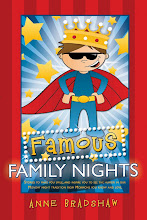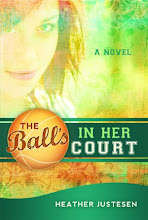A few blogs ago, I mentioned that I liked makeovers of any kind, more specifically, what I call "Manuscript Makeovers." This is a happy way of saying editing, because sometimes when people think of editing, it is unhappy thoughts that come to mind.
I actually enjoy manuscript makeovers for a number of reasons (which I won't get into here because the list might be rather lengthy and boring), but there is a certain order to all kinds of makeovers. For example, when making over a room, you may begin by clearing out all the furniture and stripping off old wallpaper, then come in with fresh paint and new or remodeled furnishings and decorations. You first clear out what isn't needed anymore, then add things you do want. When making over a face, it's similar (although you can't really peel off outdated skin without drastic measures), but you can begin with fresh, clean skin. Usually you apply the foundation first, hence the name foundation, then add other things like blush, eye makeup, and lipstick, all applied in a different way, in the hopes that the "after" will be better than the "before."
So when I makeover manuscripts, there is a certain order I take, which is this:
1. Plot-I go through the whole manuscript to make sure the plot is solid and moves well. (If it's non-fiction, I still go over the whole thing to make sure it's set up in an orderly fashion.) This I like to do first, because it's kind of like the foundation. And it includes chopping out and or livening the boring parts lest my audience falls asleep, or worse, the potential publisher falls asleep and therefore my hard work goes unpublished so that there will be no audience.
(These next few steps can be done in any order, and not necessarily at different times. Sometimes I'll go through looking for improvements in all these areas, making notes to the side, then go back and fix them all.)
2. Character-Are there any parts that need more character and voice? This is a must because character, in my opinion, is every bit as important as the plot. I try to add character throughout the story in the rough draft, but there can always be room for improvement. Are there any places that could use more emotion or feeling or inside-the-head comments or weird quirky things that make the character lovable? Are there any places that could use less of these things because it slows down the plot?
3. Show vs. Tell-I look for any parts where my mind starts to wander. (When I start thinking about doing the dishes or wondering what I have planned for dinner, it's usually a sign that the story has lost me. And usually when a story has lost me, it's because it's doing way too much telling and not enough showing.) Adding a little show in place of the telling does wonders for adding back spark, and then I'm engaged in the story.
4. Dialogue-This is so entwined with show vs. tell and character, but basically, I look to make sure the dialogue is natural. For example, "Charlie, I am so sad that our cat, Fluffy, got hit by a car. I am going to cry," Martha said sadly to her husband. This is kinda boring and uses the dialogue to explain the story. Vs. "Charlie! Come quick!" Martha ran to the street and scooped up Fluffy. He was bleeding and didn't appear to be breathing. "Oh, baby, don't die, please don't die!" This shows a lot more emotion, character, and you automatically know that Martha is probably sad or panicked without having to actually say it. (This example also shows how character, show vs. tell, and dialogue can be intertwined. You improve one, and it improves the others.)
After I've gone through the first four steps, then it's time to move on to more technical things like spelling, grammar, word choice, and word flow. These don't have to be done in any order, and I can take the manuscript and pencil in any mistakes or improvements in any of these areas and go back and fix them all.
After all that, I like to read through the whole thing again just to make sure there isn't anything I missed. (By this time, the entire thing is pretty well memorized, so perhaps saying that I like to read through the whole thing again is a misuse of words.) Plus, it's always nice to have someone else, or several someone elses, read through the manuscript carefully, because lots of times they can catch things I missed because my brain automatically sees the sentence as complete when really it's not, no matter how many times I read through it.
I have by no means perfected my process of manuscript makeovers, but it works for me by giving me some sense of order and by making it fun as well. If you would like to see an example of a manuscript makeover (which includes living examples of character, show vs. tell and dialogue,) click here.
Thursday, November 11, 2010
Manuscript Makeovers
Posted by Jillayne Clements at 10:10 AM
Labels: character, dialogue, editing, manuscript makeover, plot, show vs. tell
Subscribe to:
Post Comments (Atom)

















3 comments:
Wonderful post!
That's a good process. I too would rather work on a bad draft of a good story than the initial draft of a story I'm still unsure of. I really enjoy final revisions that put that final 10% improvement, making it shine.
Thanks for your comments. And welcome to the blog.
Post a Comment